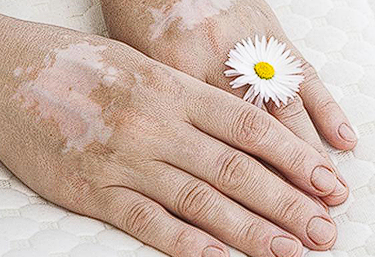Why Some Vitiligo is Easy to Treat and Some is Hard to Treat?
Many patients have this experience, when have a small piece of white patch, they treat it for half a year but still not seen improvement, while other patients with a much larger white patch will see the result in two or three months of treatment, what is the problem?
In fact, the difficulty of treating vitiligo has many factors, such as the degree of melanin loss in the skin, individual differences, and sensitivity to light for each person.

I. The degree of melanin loss in the skin
The melanin loss under the white patches varies from patient to patient. The more severe the melanin loss, the more difficult it is to treat the disease.
Grayish white: mild and early melanin loss, the lesions still have a lot of melanin left.
Milky white: moderate and mid-stage melanin loss with some melanin remaining in the lesion.
Cloudy white: severe depigmentation with a small amount of melanin remaining in the lesion.
Porcelain white: complete pigment loss, complete loss of melanin in the lesion area.
II. Individual differences in response to drugs
Different patients have different quantitative and qualitative response to the same drug, even if the patient's age, gender and living conditions are identical, they could still have different reactions to the same drug. Such differences between individuals, called Individual differences in response to drugs. Individual differences in clinical practice have 2 forms, according to individual differences to decide which drug to use and the dosage of it.
1. Hypersensitivity.
Some people are more sensitive to the effects of certain drugs than others, the use of a small amount of drug can produce significant therapeutic effect, there will be some toxic side effects if the dosage is slightly larger, this effect is clinically known as drug hypersensitivity reaction. For drugs use in hypersensitivity, the dosage should be reduced as appropriate.
2、Tolerance.
Some people have a low sensitivity to certain drugs, the use of general common amount of curative effect is not obvious, or even ineffective, and no side effects, until the use of a larger amount, then the curative effect, and the body can tolerate that. For patients with high tolerance, such drugs should be used in increasing amounts as appropriate.
III. The sensitivity to light
Different patients who received phototherapy treatment, will find that the treatment is not always effective, this is because different patients have different degrees of sensitivity to light, the recovery of their own skin also varies.



Leave a Comment